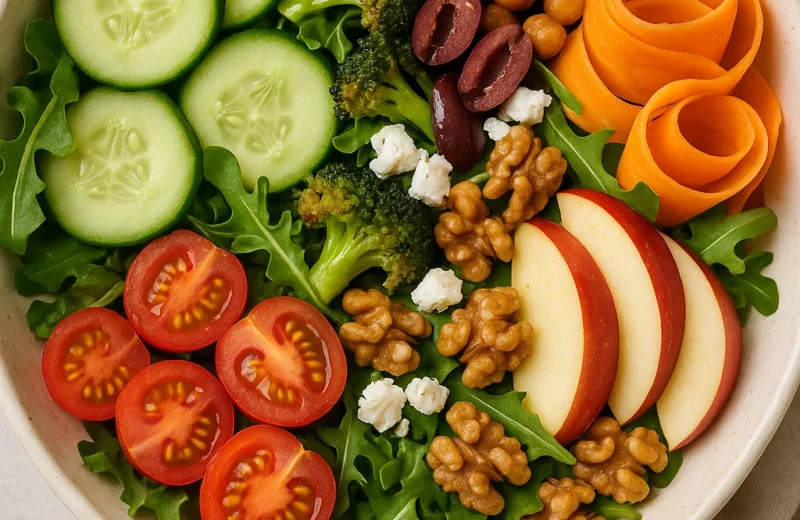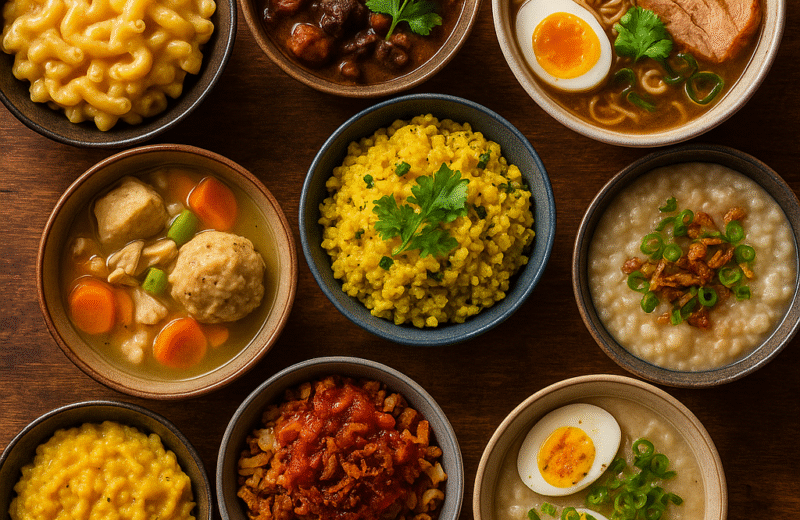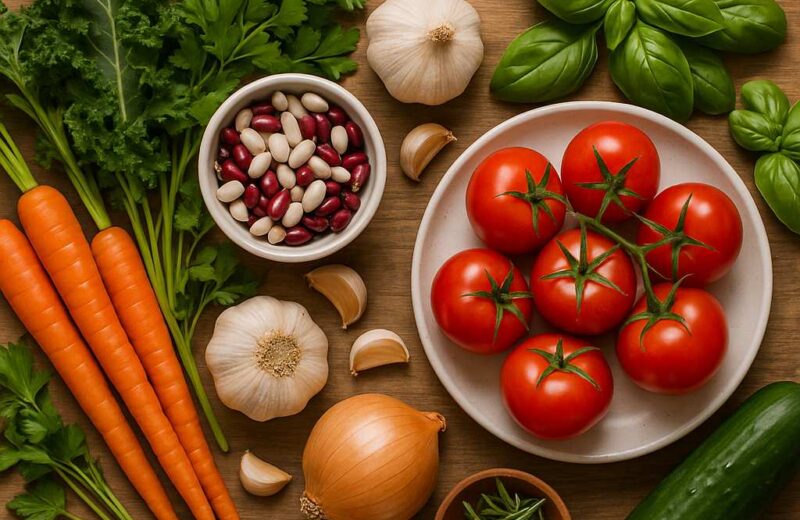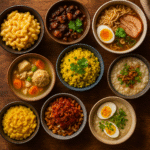International Cuisine: A Complete Guide to World’s Most Beloved Dishes and Flavors
- 5월 27, 2025
- 0
- 13 Min Read
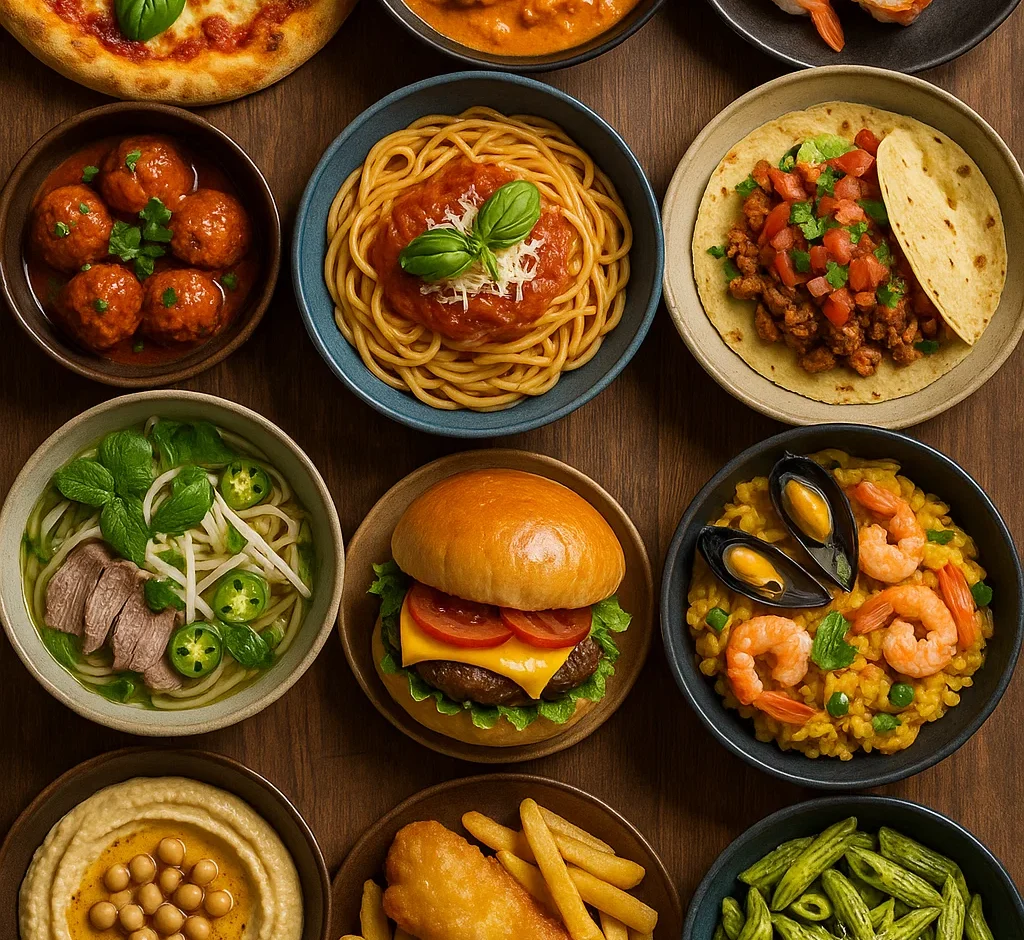
Discover the rich tapestry of global flavors, cooking techniques, and cultural traditions that make international cuisine a fascinating culinary adventure for food enthusiasts worldwide.
Introduction to International Cuisine
International cuisine represents the beautiful diversity of flavors, cooking methods, and culinary traditions that have evolved across different cultures and continents. From the spicy curries of India to the delicate pastries of France, each region’s unique approach to food tells a story of history, geography, climate, and cultural values. Understanding international cuisine opens doors to new flavors, cooking techniques, and a deeper appreciation for the world’s rich culinary heritage.
The beauty of exploring international cuisine lies not just in tasting new flavors, but in understanding how food connects people across borders. Each dish carries with it centuries of tradition, passed down through generations and adapted to local ingredients and preferences. This culinary journey allows us to experience different cultures from our own kitchens, making international cuisine an accessible way to broaden our horizons and expand our palates.
The Foundation of World Cuisines
Understanding Regional Influences
International cuisine is shaped by numerous factors that create distinct regional characteristics. Geography plays a crucial role, as coastal regions develop seafood-heavy cuisines while mountainous areas focus on hearty, warming dishes. Climate influences ingredient availability and preservation methods, leading to the development of signature spices, fermentation techniques, and cooking styles that define each region’s culinary identity.
Historical trade routes have also significantly impacted international cuisine development. The Silk Road brought spices from Asia to Europe, while colonial periods introduced new ingredients to different continents. These cultural exchanges created fusion cuisines and adapted traditional recipes, resulting in the diverse international food landscape we enjoy today.
Essential Ingredients Across Cultures
Every international cuisine has its foundation ingredients that create distinctive flavor profiles. Mediterranean cuisine relies heavily on olive oil, garlic, tomatoes, and fresh herbs like basil and oregano. Asian cuisines often feature soy sauce, ginger, garlic, and various fermented ingredients that add umami depth to dishes. Latin American cooking incorporates chili peppers, lime, cilantro, and corn as staple ingredients.
Understanding these foundational ingredients helps home cooks recreate authentic international dishes. Many of these ingredients are now readily available in international markets and online stores, making it easier than ever to explore world cuisines from your own kitchen. Investing in quality spices and authentic ingredients makes a significant difference in achieving genuine international flavors.
European Cuisine: Elegance and Tradition
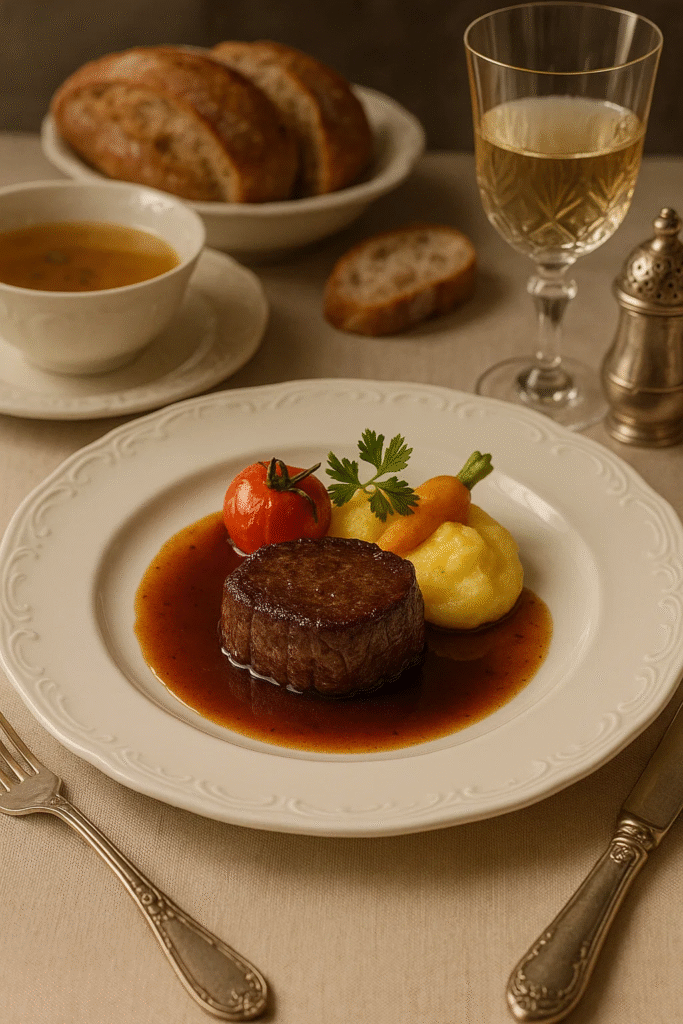
French Culinary Excellence
French cuisine represents the pinnacle of culinary sophistication, with techniques and principles that have influenced cooking worldwide. French cooking emphasizes quality ingredients, precise techniques, and elegant presentation. Classic French dishes like Coq au Vin, Bouillabaisse, and Ratatouille showcase the country’s mastery of slow cooking, sauce-making, and flavor layering.

The French approach to cooking involves building complex flavors through careful preparation and attention to detail. Techniques like braising, confit, and creating mother sauces form the foundation of French culinary education. French pastry making has also set global standards, with croissants, macarons, and crème brûlée being enjoyed worldwide.
Italian Regional Specialties
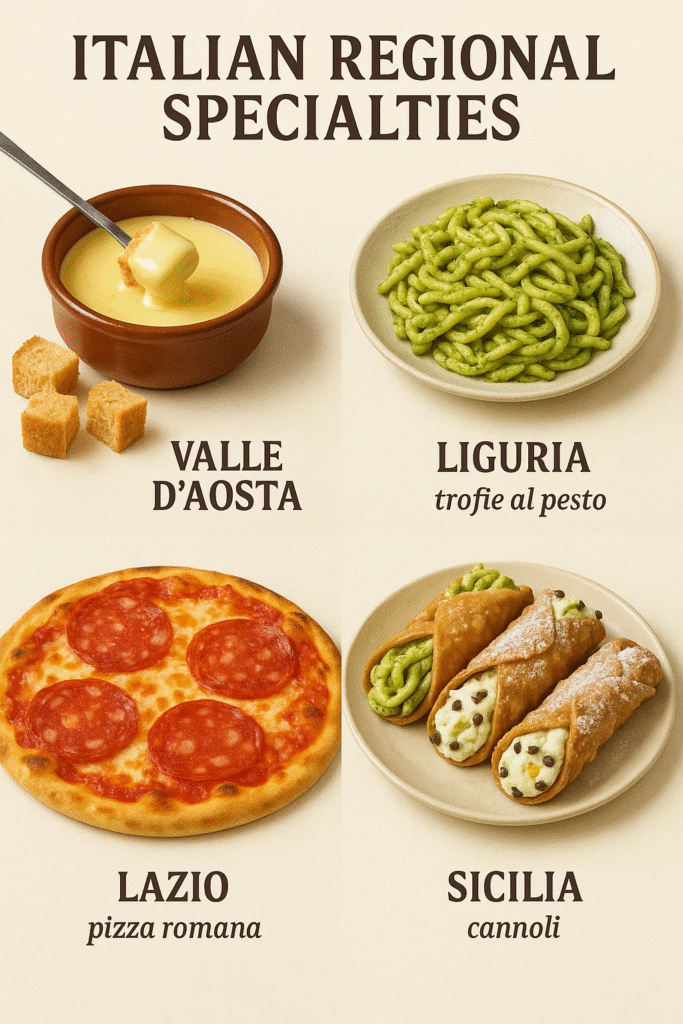
Italian cuisine extends far beyond pizza and pasta, encompassing diverse regional specialties that reflect Italy’s varied geography and cultural history. Northern Italian cuisine features rich, creamy dishes with butter, cheese, and rice, while Southern Italian food emphasizes tomatoes, olive oil, and seafood. Each region has developed distinct pasta shapes, sauce combinations, and cooking methods.
Authentic Italian cooking focuses on simplicity and quality ingredients. Dishes like Risotto Milanese from the north, Pasta alla Carbonara from central Italy, and Sicilian Caponata from the south demonstrate how regional ingredients and traditions create unique flavor profiles. Italian cuisine also emphasizes seasonal cooking and family-style dining, making it both approachable and deeply satisfying.
Spanish Tapas Culture
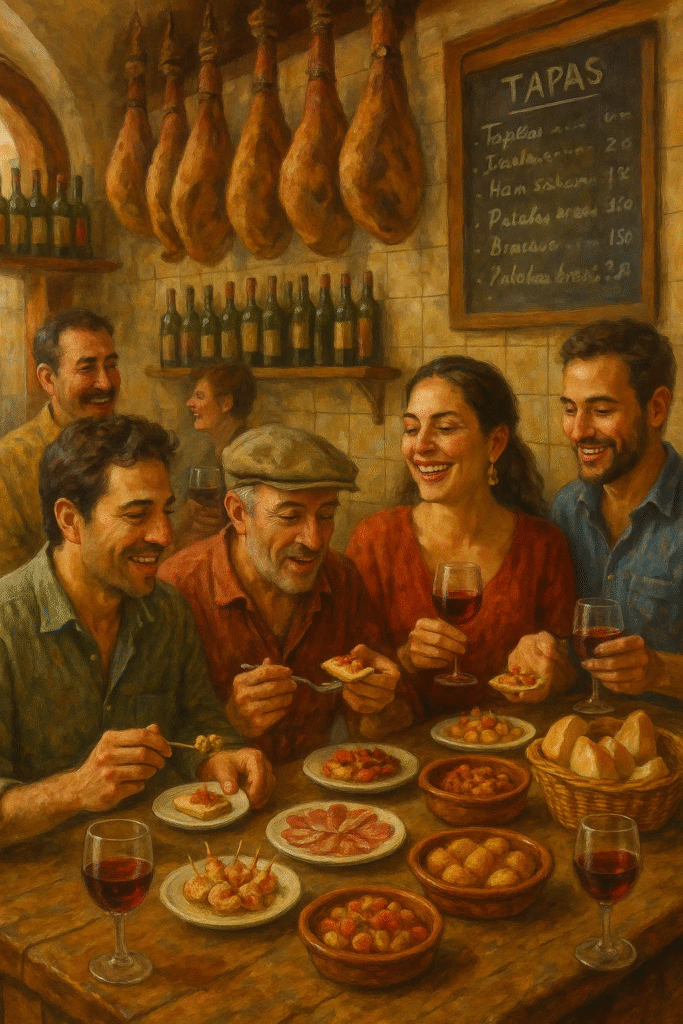
Spanish cuisine offers a vibrant tapas culture that encourages social dining and flavor exploration. Traditional Spanish dishes like Paella, Gazpacho, and Jamón Ibérico showcase the country’s agricultural abundance and coastal influences. Spanish cooking often features bold flavors from ingredients like saffron, paprika, sherry vinegar, and high-quality olive oil.
The Spanish approach to dining emphasizes sharing and socializing, with tapas serving as small plates that allow diners to sample multiple flavors and dishes. This dining style has influenced international cuisine trends, with tapas-style restaurants becoming popular worldwide. Spanish cooking techniques like grilling over wood fires and slow-cooking stews create distinctive smoky and rich flavors.
Asian Cuisine: Balance and Harmony
Chinese Regional Variations
Chinese cuisine encompasses eight major regional cooking styles, each with distinct characteristics and signature dishes. Cantonese cuisine from the south emphasizes fresh ingredients and subtle flavors, while Sichuan cuisine from the west is known for its bold, spicy, and numbing flavors from Sichuan peppercorns. Northern Chinese cuisine features wheat-based dishes like dumplings and noodles, while coastal regions specialize in seafood preparations.
Traditional Chinese cooking principles focus on balancing flavors, textures, and colors within each meal. The concept of “wok hei” or breath of the wok creates distinctive smoky flavors in stir-fried dishes. Chinese cuisine also emphasizes the medicinal properties of food, incorporating ingredients that promote health and balance according to traditional Chinese medicine principles.
Japanese Culinary Philosophy
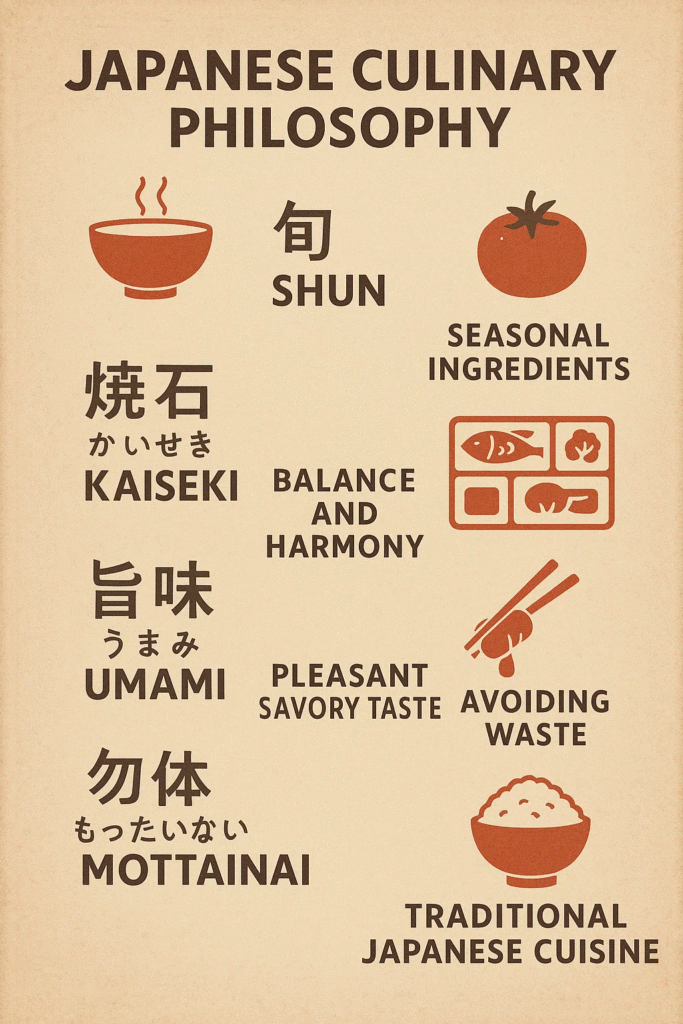
Japanese cuisine embodies the principles of seasonality, simplicity, and respect for natural flavors. Traditional Japanese cooking emphasizes fresh, high-quality ingredients prepared with minimal manipulation to preserve their essential characteristics. Dishes like sushi, tempura, and miso soup demonstrate the Japanese mastery of technique and presentation.
The Japanese concept of “umami” or the fifth taste has revolutionized international cuisine understanding. Japanese cooking techniques like fermentation, grilling, and raw preparation methods have influenced global culinary trends. The aesthetic presentation of Japanese food, with attention to color, shape, and seasonal elements, has also elevated international standards for food presentation.
Thai Flavor Complexity

Thai cuisine masterfully balances sweet, sour, salty, and spicy flavors in every dish. Traditional Thai cooking relies on fresh herbs and spices like lemongrass, galangal, Thai basil, and various chili peppers to create complex flavor profiles. Dishes like Tom Yum soup, Pad Thai, and Green Curry showcase Thailand’s ability to combine multiple ingredients into harmonious and intensely flavorful compositions.
Thai cuisine emphasizes fresh ingredients and quick cooking methods that preserve the vibrant flavors and textures of vegetables and herbs. The use of coconut milk, fish sauce, and tamarind creates distinctive flavor bases that define Thai cooking. Regional variations within Thailand offer different spice levels and ingredient combinations, providing diverse options for international cuisine enthusiasts.
Middle Eastern and Mediterranean Flavors
Lebanese and Levantine Cuisine
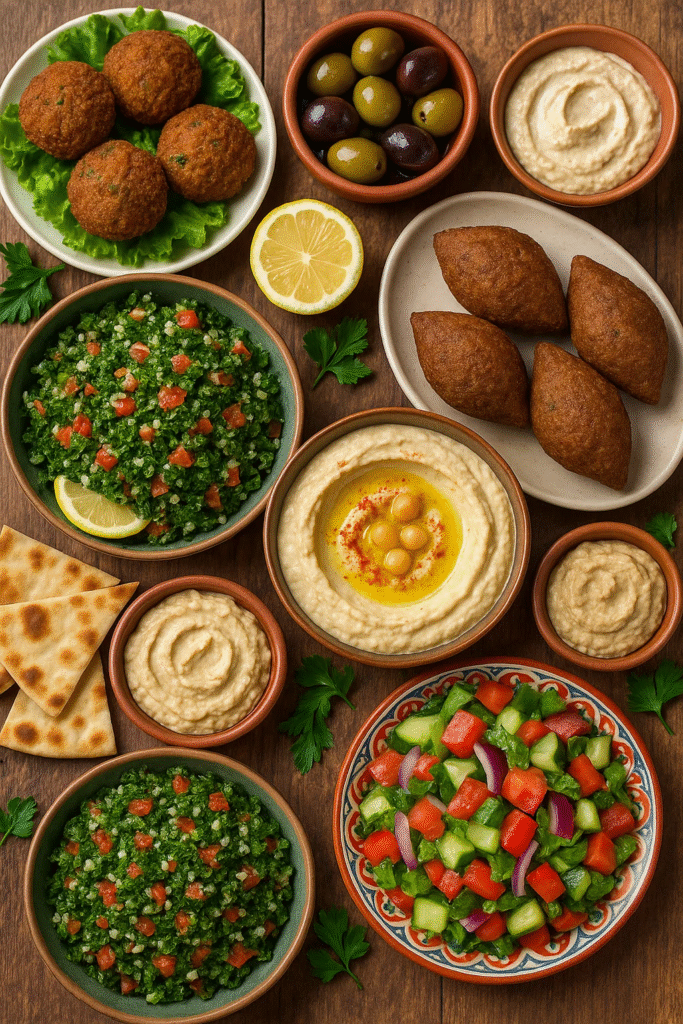
Lebanese cuisine represents the heart of Mediterranean and Middle Eastern cooking, featuring fresh vegetables, grains, legumes, and aromatic spices. Traditional dishes like Hummus, Tabbouleh, and Kibbeh showcase the Lebanese mastery of combining simple ingredients into flavorful and nutritious meals. Lebanese cooking emphasizes mezze-style dining, offering variety and encouraging social interaction.
The Lebanese approach to international cuisine focuses on healthy ingredients like olive oil, lemon juice, garlic, and fresh herbs. Techniques like grilling, roasting, and raw preparations preserve the natural flavors of ingredients while adding complexity through spice blends like za’atar and baharat. Lebanese cuisine also features excellent vegetarian options, making it accessible to diverse dietary preferences.
Turkish Culinary Heritage
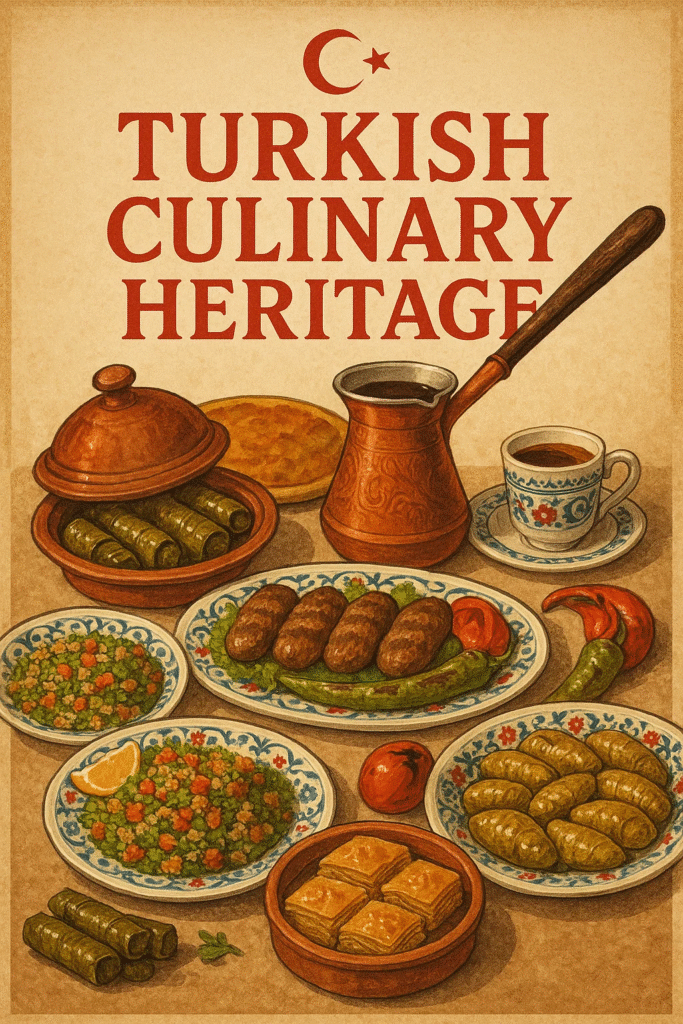
Turkish cuisine bridges European and Asian culinary traditions, creating a unique international cuisine style that incorporates influences from Ottoman imperial cooking and regional Turkish specialties. Traditional Turkish dishes like Kebabs, Dolmas, and Baklava demonstrate the country’s mastery of grilled meats, stuffed vegetables, and sweet pastries.
Turkish cooking emphasizes the use of high-quality ingredients like lamb, yogurt, bulgur wheat, and various nuts and dried fruits. The Turkish approach to spicing is subtle but complex, using combinations like sumac, Aleppo pepper, and Turkish oregano to create distinctive flavors. Turkish cuisine also features an impressive array of breakfast dishes and tea culture that reflects the importance of hospitality in Turkish society.
Latin American Vibrance
Mexican Regional Diversity

Mexican cuisine offers incredible regional diversity, from the seafood-focused dishes of coastal areas to the complex mole sauces of central Mexico. Traditional Mexican cooking relies on indigenous ingredients like corn, beans, squash, chili peppers, and chocolate, combined with Spanish colonial influences. Dishes like authentic Tacos, Pozole, and Chiles Rellenos showcase Mexico’s sophisticated approach to balancing flavors and textures.
Mexican cuisine emphasizes the importance of corn in various forms, from tortillas to tamales to pozole. The Mexican mastery of chili pepper varieties creates complex heat levels and flavor profiles that define regional specialties. Traditional cooking methods like slow-braising, grinding spices on molcajetes, and char-grilling over open flames create distinctive flavors that make Mexican cuisine a favorite in international dining.
Peruvian Fusion Innovation
Peruvian cuisine has gained international recognition for its innovative fusion of indigenous ingredients with influences from Japanese, Chinese, and Spanish cooking traditions. Dishes like Ceviche, Lomo Saltado, and Anticuchos demonstrate Peru’s unique approach to combining fresh seafood, bold flavors, and diverse cooking techniques.
The Peruvian culinary revolution emphasizes the use of native ingredients like quinoa, purple potatoes, aji amarillo peppers, and fresh corn varieties. Peruvian cuisine also showcases innovative preparations like Nikkei (Japanese-Peruvian fusion) and Chifa (Chinese-Peruvian fusion) that have influenced international cuisine trends worldwide.
African Culinary Traditions
North African Spice Mastery
North African cuisine, particularly Moroccan and Tunisian cooking, demonstrates masterful use of spice blends and slow-cooking techniques. Traditional dishes like Tagines, Couscous, and Harira soup showcase the region’s ability to create complex flavors through careful spice combinations and patient cooking methods.
Moroccan cuisine emphasizes the use of preserved lemons, olives, dried fruits, and spice blends like Ras el Hanout to create distinctive flavor profiles. The North African approach to international cuisine includes both savory and sweet elements within the same dish, creating unique and memorable dining experiences.
West African Flavor Foundations
West African cuisine provides the foundation for many international fusion dishes, particularly in the Americas where African culinary traditions influenced regional cooking styles. Traditional West African ingredients like yams, plantains, peanuts, and various leafy greens create hearty and flavorful dishes.
West African cooking techniques like one-pot meals, fermentation, and the use of palm oil create distinctive flavors that have influenced international cuisine development in countries with African diaspora populations. Dishes like Jollof Rice and various stews demonstrate the sophisticated flavor-building techniques of West African cuisine.
Cooking Techniques Across Cultures
Traditional Methods and Modern Applications
International cuisine encompasses diverse cooking methods that have developed over centuries to maximize flavor and nutrition from available ingredients. Techniques like French braising, Chinese stir-frying, Indian tandoor cooking, and Peruvian ceviche preparation each offer unique ways to transform ingredients into memorable dishes.
Understanding these traditional cooking methods allows home cooks to recreate authentic international flavors and adapt techniques to modern kitchen equipment. Many traditional international cooking methods can be successfully adapted using contemporary appliances while maintaining the essential flavor characteristics that define each cuisine.
Essential Equipment for International Cooking
Creating authentic international cuisine often requires specific equipment or techniques that may differ from standard Western cooking methods. Items like woks for Chinese cooking, tagines for Moroccan dishes, comals for Mexican tortillas, and rice cookers for Asian cuisines can significantly improve the authenticity and quality of international dishes.
However, many international cuisine techniques can be adapted using standard kitchen equipment with slight modifications. Understanding the principles behind each cooking method allows creative substitutions that maintain the essential characteristics of international dishes while working within available resources.
Health Benefits of International Cuisine
Nutritional Diversity and Balance
International cuisine offers excellent opportunities for maintaining nutritional variety and balance in daily meals. Mediterranean diets rich in olive oil, fish, and vegetables provide heart-healthy benefits, while Asian cuisines emphasizing vegetables, lean proteins, and fermented foods support digestive health and longevity.
Exploring international cuisine naturally encourages consumption of diverse ingredients, spices, and cooking methods that can improve overall nutrition. Many traditional international dishes combine complete proteins, healthy fats, and abundant vegetables in balanced proportions that support optimal health.
Medicinal Properties of International Ingredients
Many international cuisines incorporate ingredients with significant medicinal properties, reflecting traditional knowledge about food as medicine. Spices like turmeric in Indian cooking, ginger in Asian dishes, and garlic in Mediterranean cuisine provide anti-inflammatory and immune-supporting benefits.
Understanding the health benefits of international cuisine ingredients allows conscious incorporation of these beneficial foods into regular meal planning. Many international spices and herbs offer antioxidant, anti-inflammatory, and digestive benefits that support overall wellness while providing delicious flavors.
Modern International Cuisine Trends
Fusion Cooking Evolution
Modern international cuisine increasingly features fusion cooking that combines techniques and ingredients from multiple culinary traditions. Korean-Mexican fusion, Japanese-Peruvian Nikkei cuisine, and Indo-Chinese dishes demonstrate how creative chefs blend international influences to create innovative new flavors.
Fusion cuisine allows creative expression while respecting traditional techniques and flavors from different international cooking styles. This approach encourages experimentation and adaptation while maintaining the essential characteristics that make each international cuisine unique and recognizable.
Sustainable International Cooking
Contemporary international cuisine emphasizes sustainability through local sourcing, seasonal ingredients, and reduced waste cooking methods. This approach allows enjoyment of international flavors while supporting environmental responsibility and local food systems.
Sustainable international cooking often involves adapting traditional recipes to use locally available ingredients while maintaining authentic flavor profiles. This practice supports both environmental goals and economic accessibility while preserving the essential characteristics of international cuisine.
Tips for Exploring International Cuisine at Home
Building Your International Pantry
Creating an international cuisine pantry involves gradually collecting essential spices, sauces, and ingredients from different culinary traditions. Starting with basics like soy sauce, olive oil, cumin, paprika, and garlic provides a foundation for exploring multiple international cooking styles.
Building an international pantry allows spontaneous cooking from various world cuisines without requiring special shopping trips for each recipe. Quality spices and authentic ingredients make significant differences in achieving genuine international flavors, making careful selection and proper storage important considerations.
Recipe Adaptation and Substitution
Successfully exploring international cuisine often requires adapting recipes to available ingredients and personal preferences while maintaining authentic flavor profiles. Understanding the role of each ingredient helps make appropriate substitutions that preserve the essential characteristics of international dishes.
Effective international cuisine adaptation involves understanding which elements are essential for authentic flavors and which can be modified without compromising the dish’s integrity. This knowledge allows creative flexibility while respecting traditional cooking principles and techniques.
Conclusion: Embracing Global Culinary Diversity
International cuisine offers endless opportunities for culinary exploration, cultural learning, and flavor discovery. Each world cuisine provides unique perspectives on ingredients, techniques, and dining traditions that can enrich our cooking repertoire and broaden our cultural understanding.
The journey through international cuisine connects us to diverse cultures and traditions while expanding our culinary skills and palate appreciation. Whether recreating traditional recipes or exploring modern fusion adaptations, international cuisine provides a delicious pathway to global cultural exploration and culinary growth.
Embracing international cuisine in our daily cooking creates opportunities for adventure, learning, and connection with food traditions from around the world. This culinary exploration enriches our dining experiences while fostering appreciation for the diverse ways cultures approach food, flavor, and hospitality.
Ready to start your international cuisine adventure? Browse our extensive collection of authentic recipes from around the world at 베스트푸드레시피닷컴 and discover new favorites that will transform your home cooking experience. From quick weeknight dinners to elaborate weekend projects, international cuisine offers something delicious for every occasion and skill level.

